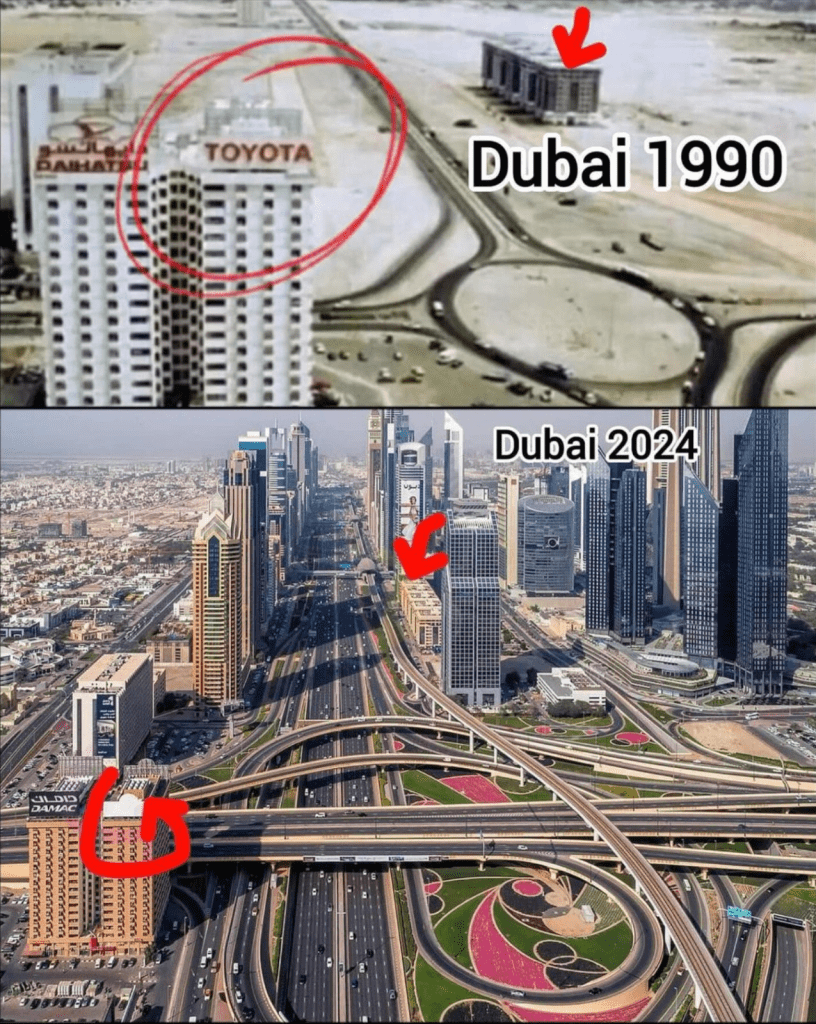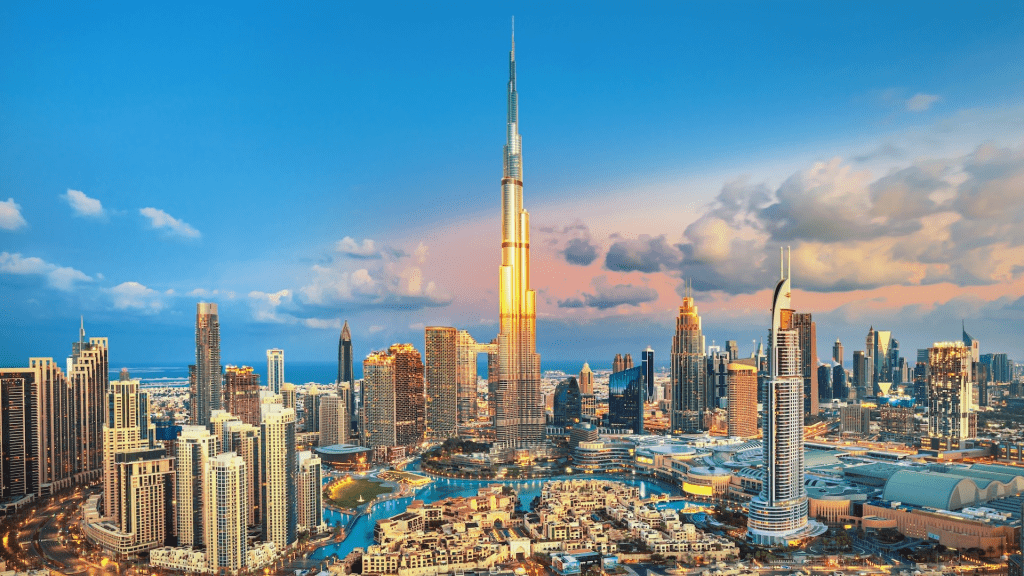
Dubai, one of the seven emirates of the United Arab Emirates (UAE), has undergone a remarkable transformation from a small coastal city into a global hub for finance, tourism, and trade. The city’s rapid development from 1990 to the present has not only changed its skyline but also had a profound impact on the economy of the Middle East and the world. Below is an overview of Dubai’s development over the past three decades.

Early Years (1990-2000): The First Steps
In the 1990s, Dubai was still a relatively small city relying on traditional industries such as oil, fishing, and trade. However, the leaders of Dubai recognized that the city’s future could not solely depend on oil. Under the leadership of Sheikh Mohammed bin Rashid Al Maktoum, Dubai began to diversify its economy.
One of the first important steps was to build modern infrastructure. Major investment projects were launched to enhance transportation and trade capabilities, including the development of the Port of Dubai and Dubai International Airport, which later became one of the busiest airports in the world and a major international transit hub.
During this period, Dubai also started to develop its tourism industry with landmark projects like the Burj Al Arab hotel, which opened in 1999. Designed in the shape of a sail, this hotel became a symbol of luxury and an important part of Dubai’s strategy to position itself as a premier tourist destination.
Period of Rapid Growth (2000-2010): Iconic Projects and Ambitious Development
Entering the 21st century, Dubai experienced an explosive phase of development with groundbreaking architectural projects and large-scale infrastructure initiatives. The city began to capture global attention with wonders such as:
- Burj Khalifa: Opened in 2010, Burj Khalifa became the world’s tallest building at 828 meters. It stood as a symbol of Dubai’s extraordinary growth and ambition to be a global center.
- Palm Jumeirah: One of the largest and most unique real estate projects in the world, Palm Jumeirah is an artificial island built in the shape of a palm tree. This project not only attracted global investment but also elevated Dubai’s status as an international tourism and real estate hub.
- Dubai Mall: Opened in 2008, Dubai Mall became the world’s largest shopping center, offering a range of luxury services and amenities. It played a key role in attracting tourists and enhancing Dubai’s retail industry.
These projects not only helped Dubai’s economy grow but also reinforced the city’s position on the global stage. In addition, Dubai experienced strong growth in finance, banking, and real estate, notably with the establishment of the Dubai International Financial Centre (DIFC) in 2004, which contributed to Dubai becoming a major international financial hub.
Global Integration and the Financial Crisis (2010-2020)
After the boom in the early 21st century, Dubai faced a global financial crisis in 2008. However, thanks to strong economic stimulus measures and support from the UAE’s federal government, Dubai quickly recovered. The city’s rapid rebound demonstrated its resilience and ability to navigate through economic challenges.
During this period, Dubai continued to develop major infrastructure projects such as the Dubai Expo 2020, which was expected to attract millions of visitors and create thousands of job opportunities. This event was not only a platform for Dubai to showcase its ability to host international events but also a catalyst for boosting tourism and trade.
Modern Era (2020 – Present): Digital Transformation and Sustainable Development
Dubai continues to grow rapidly into the third decade of the 21st century. Sustainable development and digital transformation have become key factors in the city’s vision. Dubai is striving to become a smart city and environmentally friendly. New technologies such as artificial intelligence, blockchain, and self-driving cars are being integrated into the city’s infrastructure.
Dubai has also focused on renewable energy projects, particularly the Mohammed bin Rashid Al Maktoum Solar Park, one of the largest solar power plants in the world. The city is committed to reducing carbon emissions and creating a sustainable future by developing green technologies and eco-friendly urban areas.
Moreover, Dubai has succeeded in building a strong startup ecosystem with areas such as Dubai Silicon Oasis and Dubai Internet City, attracting tech companies and startups from all over the globe.

Conclusion
From a small city to a symbol of innovation and sustainable growth, Dubai has evolved into a global leader in infrastructure, finance, tourism, and technology. Through continuous investment in infrastructure, the development of non-oil industries, and the integration of cutting-edge technologies, Dubai has not only become a global center for finance, commerce, and tourism but also a model of creativity and adaptability in the modern world.
Zaproxy dolore alias impedit expedita quisquam.